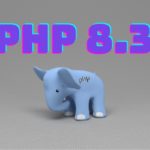The web development landscape is changing quickly. Choosing the right frontend framework can be hard. Angular has established itself as a leading contender, but how does it stack up against other popular frontend frameworks? Let’s delve into a comparative analysis to understand the strengths, weaknesses, and key differences between Angular and its competitors.
What is Angular?
Angular is a robust development platform and design framework. It is built on TypeScript. It has a component-based architecture tailored for making scalable web apps. With an array of tightly integrated libraries and functionalities, including client-server communication and routing, Angular accelerates front-end development processes. Also, Angular provides many developer tools. They help create and scale projects. The projects range from single-developer efforts to enterprise-grade applications.
What is React?
React is a JS library for front-end development. It offers an open-source platform to build UI components. React has a component-based structure. It also has declarative views. These empower developers to easily make complex user interfaces. Thanks to its “learn once, write anywhere” philosophy, developers can quickly create fast and scalable applications. They can create them for various platforms. The React team manages it. A thriving development community supports it. React is a versatile tool for modern web development.
What is Vue.js?
Vue.js is a progressive Angular JS development service for building user interfaces. It is designed from the ground up to be incrementally adoptable, meaning it can be easily integrated into existing projects. Vue.js is known for its simplicity and flexibility. It lets developers create web apps with ease. It provides features such as data binding, directives, computed properties, and transitions to streamline the development process. Vue.js also has many libraries and tools. This makes it popular for both small and large projects.
Understanding Angular: A Comprehensive Frontend Framework
Angular is a full-fledged frontend framework developed and maintained by Google. It offers a comprehensive suite of tools and features for building robust, single-page web applications. Key characteristics of Angular include:
- Opinionated Structure. Angular follows a structured architecture, promoting consistency and maintainability in large-scale projects.
- Two-Way Data Binding. Angular’s two-way data binding simplifies the synchronization of data between the model and the view, reducing boilerplate code and enhancing developer productivity.
- Rich Ecosystem. Angular boasts a rich ecosystem of libraries, tools, and extensions, providing developers with everything they need to build complex applications.
Comparing Angular with Other Frontend Frameworks
React: The Declarative Frontend Library
React, developed by Facebook, is a popular frontend library known for its declarative and component-based approach. Let’s compare React with Angular:
| Feature | Angular | React |
| Component-Based Architecture | ✓ Follows a component-based architecture | ✓ Uses a component-based approach |
| Virtual DOM | ✓ Uses regular DOM manipulation | ✓ Utilizes a virtual DOM for optimization |
| Learning Curve | ✓ Steeper learning curve | ✓ Gentle learning curve for beginners |
| Community | ✓ Large and active community | ✓ Extensive community support |
Vue.js: The Progressive JavaScript Framework
Vue.js is a progressive JavaScript framework known for its simplicity and flexibility. Let’s explore how Vue.js compares to Angular:
| Feature | Angular | Vue.js |
| Learning Curve | ✓ Steeper learning curve | ✓ Gentle learning curve for beginners |
| Performance | ✓ May introduce more overhead | ✓ Excellent performance and small bundle size |
| Flexibility | ✓ More opinionated structure | ✓ Prioritizes flexibility and simplicity |
| Community | ✓ Robust ecosystem | ✓ Growing community with active support |
How to Choose a Perfect Framework for Your Project?
Choosing the right framework for your project depends on several factors:
- Project Requirements. Consider the specific requirements of your project, such as scalability, performance, and complexity.
- Team Expertise. Assess the expertise and familiarity of your development team with different frameworks.
- Community Support. Evaluate the size and activity of the framework’s community, as community support can be crucial for troubleshooting and finding resources.
- Long-Term Maintainability. Think about the long-term maintainability of your project and how easily it can be maintained and updated over time.
In the end, the best framework for your project is the one that empowers your team. It should help them build web applications that are high-quality, scalable, and easy to maintain. And it should help them do this efficiently. Choose Angular, React, Vue.js, or another framework. Make sure it meets your project’s unique needs and supports your team’s workflow well.
Conclusion
Ultimately, the best framework for a project depends on the specific needs and goals of the development team. Carefully evaluating the strengths and trade-offs of each framework. This way, developers can make informed decisions. They can then build successful web apps that meet the demands of today’s digital landscape.











Leave a Reply